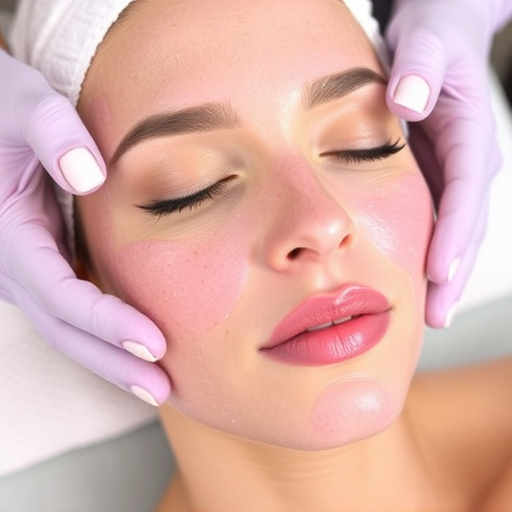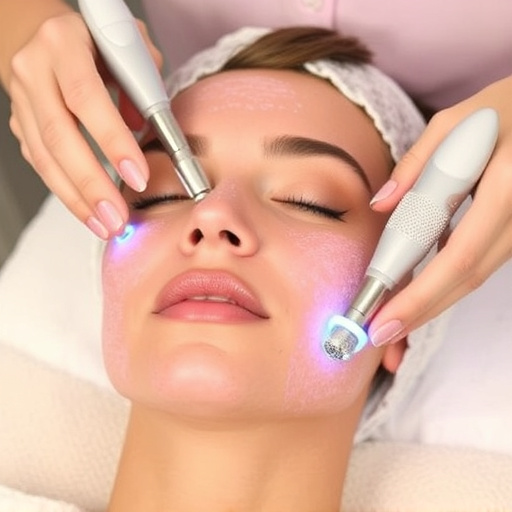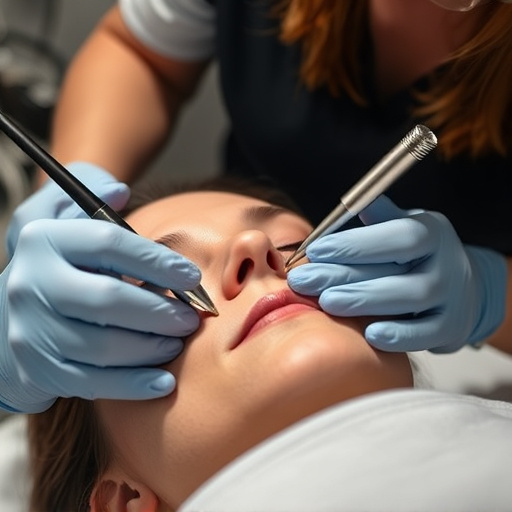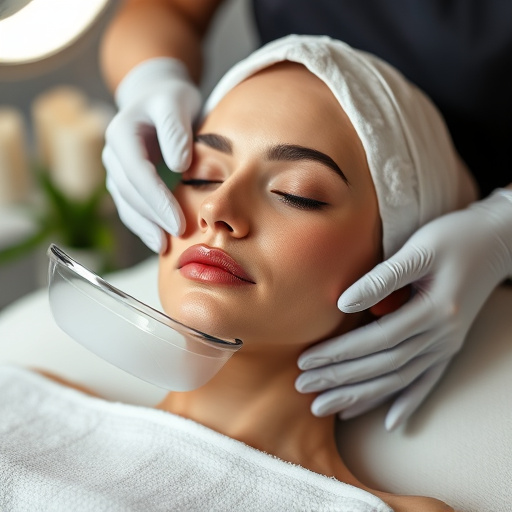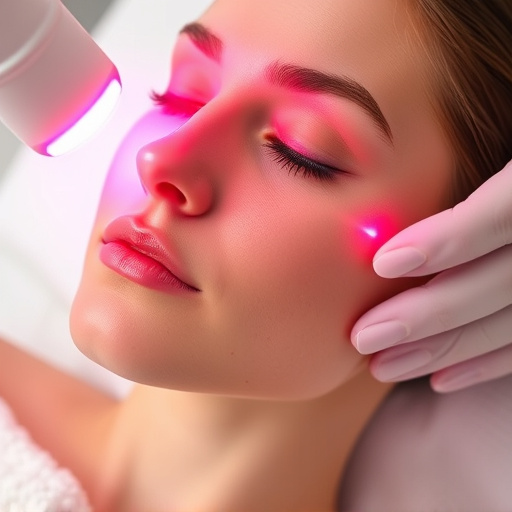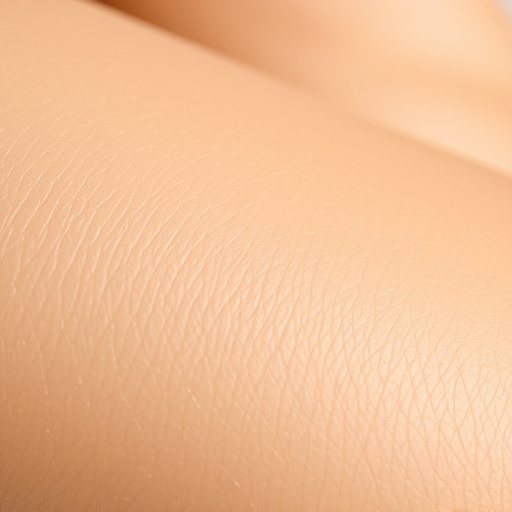Hyperpigmentation, caused by clumped melanin, leads to dark spots triggered by sun exposure, aging, inflammation, and skin injuries. Treatment options include chemical peels, microdermabrasion, microneedling, laser therapies, topical creams with Vitamin C and Hydroquinone, and professional facials. These tailored approaches target melanin production and distribution, improving uneven skin tone and promoting skin rejuvenation.
“Uncover the science behind effective hyperpigmentation treatment products. Hyperpigmentation, a common skin concern marked by dark patches, has various causes and types, from sun damage to melanin overproduction. This article delves into understanding these factors and explores the latest treatment options. We dissect the science behind key ingredients, their mechanisms of action, and how they target hyperpigmentation. Discover proven approaches to even out your skin tone and reclaim a radiant complexion.”
- Understanding Hyperpigmentation: Causes and Types
- The Science Behind Treatment Options
- Effective Ingredients and Their Mechanisms
Understanding Hyperpigmentation: Causes and Types
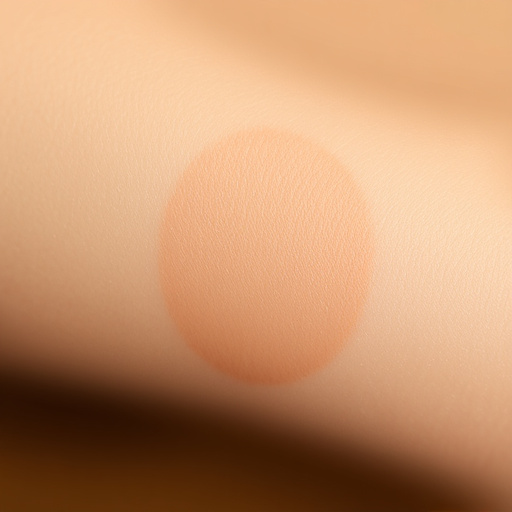
Hyperpigmentation is a common skin concern characterized by dark patches or spots that appear on various parts of the body. It occurs when melanin, the pigment responsible for giving skin its color, clumps together and results in an uneven skin tone. Understanding hyperpigmentation’s causes and types is essential when considering hyperpigmentation treatment.
There are several factors that can trigger this condition, including sun exposure, aging, inflammation, certain medications, and skin injuries. Sun damage is one of the primary contributors, especially after prolonged or intense UV radiation. This leads to an overproduction of melanin as the skin tries to protect itself from further damage, often resulting in dark spots or freckles. Other types include post-inflammatory hyperpigmentation, melasma, and age spots, each with distinct triggers and characteristics. Anti-aging treatments and aesthetic treatments, such as chemical peels and microdermabrasion, are sometimes employed to address these issues, targeting not just hyperpigmentation but also skin rejuvenation and body contouring as secondary benefits.
The Science Behind Treatment Options

The science behind hyperpigmentation treatment options has evolved significantly, offering a range of effective solutions for those seeking to even out their skin tone. Understanding the mechanisms behind this condition is key to developing successful treatments. Hyperpigmentation occurs when melanin, the pigment responsible for skin color, becomes overproduced in specific areas, leading to darker spots or patches. This process can be triggered by various factors such as sun exposure, inflammation, or certain skin conditions.
Among the popular hyperpigmentation treatment options are microneedling therapy and aesthetic treatments like chemical peels. Microneedling involves creating tiny pricks in the skin with fine needles, stimulating collagen production and helping to break up pigmented spots. Facial treatments, including targeted topical creams and laser therapies, also play a significant role. These approaches work by interfering with melanin synthesis or targeting specific enzymes involved in pigment production, offering a comprehensive approach to addressing hyperpigmentation concerns.
Effective Ingredients and Their Mechanisms

Effective ingredients in hyperpigmentation treatment products target melanin production and distribution with precise mechanisms. One prominent example is Vitamin C (ascorbic acid), a powerful antioxidant that inhibits tyrosinase, an enzyme pivotal to melanin synthesis. Additionally, it brightens the skin by promoting collagen synthesis, helping to even out skin tone. Hydroquinone is another widely recognized ingredient, blocking melanin formation and breaking down existing dark spots.
Chemical peels and hydrating facials also play a crucial role in hyperpigmentation treatment. Chemical peels use concentrated acids to exfoliate away damaged skin cells, revealing lighter-toned skin beneath. Hydrating facials, on the other hand, provide deep moisture to the skin, supporting its natural healing processes and enhancing the effectiveness of other treatments. These methods work synergistically with targeted ingredients to offer comprehensive hyperpigmentation treatment solutions.
Hyperpigmentation treatment has advanced significantly, leveraging scientific understanding to offer effective solutions. By targeting specific mechanisms, products can even out skin tone and reduce the appearance of dark spots. Key active ingredients like hydroquinone, retinoids, and vitamin C have proven efficacy in inhibiting melanin production and promoting skin renewal. Combining these insights with careful product selection can lead to substantial improvements in hyperpigmentation treatment outcomes.


